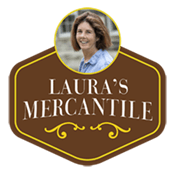Dear Friends,
What is going on with hemp? I’ve been asked this question many times since hemp legislation was attached to the bill to reopen the government last week. I’ve decided to write to our customers with a full answer. It’s a little shaggy dog but read on!
The intention behind the 2018 Farm Bill was to legalize hemp. Since THC is one of the scores of cannabinoids in the hemp plant, many of which are beneficial, a legal limit of 0.3% Delta-9 THC on a dry weight basis was established. This initial government standard was based on naturally occurring ratios of cannabinoids in hemp plants. The science was done in several state-regulated pilot programs, as hemp hadn’t been raised legally in the USA for almost 100 years. Mt. Folly was part of the early pilots, established in the 2014 Farm Bill. The idea was to have farmers and universities raise hemp to understand compliance data, working closely with the Kentucky and United States Departments of Agriculture.
This is how Mt. Folly has been raising hemp since 2015. Initially, we grew hemp for grain, which we made into Laura’s Hemp Dark Chocolate Candy, and hemp for fiber, making hempcrete for the Homestead Cabin chinking. At this time, I was still recovering from a horseback riding accident, and at a University of Kentucky hemp meeting, I tried some CBD. Without a doubt, this made me feel better—less achy—so we started growing and selling that, too.
During these years, hemp plant breeders and importers were trying to get the CBD content of the plant more concentrated while keeping THC within the low limits. Mt. Folly grew several varieties, which were tested at harvest and then retested all the way through product development, ending with each batch’s Certificate of Analysis (COA), an official third-party lab document that reports the make-up of a hemp product, including cannabinoid potency as well as THC levels.
This certificate is crucial for verifying that a hemp sample meets legal requirements—such as containing less than 0.3% Delta-9 THC—as well as safety and quality standards before it is sold. Mt. Folly has never sold CBD that doesn’t meet the intended, federally established THC standard. Nor have we ever applied any chemistry to our CBD products to make them intoxicating.
Meanwhile, chemists figured out a way to create products that would get people high while technically meeting the letter of the law. The central step was to make isomers by rearranging and breaking CBD—the “good cannabinoid”—into intoxicating ones. Acids such as sulfuric, hydrochloric, or phosphoric, plus heat, rearrange the molecules of CBD into various THC isomers, particularly Delta-8 THC.
Then, in 2022, the 9th Circuit held that hemp-derived Delta-8 fell within the 2018 Farm Bill definition of hemp. Once this legal theory was clear, “stoner” hemp flooded in. This is why you can buy intoxicating gummies, vapes, and beverages online and at gas stations across the country.
The products offered by sketchy companies and a few legacy brands online and at some retailers moved beyond Delta-8 to Delta-10, HHC, THCP, and high-THCA flower marketed as hemp, which converts to high THC when smoked or vaped (heated).
Again, the loophole trick is to use heat and harsh solvents to rearrange the exact same number of atoms in a molecule, which changes the properties of the molecule, making ones that get people stoned or high.
Thus was born Barely Legal, Koi, 3Chi, Hyper, and a thousand other brands. The new legislation puts them out of business.
Legacy companies took a different approach: because the 2018 Farm Bill set limits based on “dry weight,” established hemp brands found ways to include intoxicating amounts of naturally occurring Delta-9 THC in each gummy.
The math that exposes the loophole is worth understanding. It’s gummy-based. A Cannabuzz Northern Lights gummy weighs 6 grams (6,000 mg) and contains 15 mg of THC.
It’s simple division, really. 15mg/6,000 mg = .25% Delta-9 on a dry weight basis, so it passes. Similarly, a Cornbread Hemp Blood Orange Bliss 10 mg THC gummy weighs 5 grams (5 g = 5,000 mg), which means they can have up to 0.3% Delta-9 THC on a dry weight basis. Ten milligrams of THC per 5,000 mg of total weight—10/5,000 = 0.002, or 0.2%. So it passes. Ten or 15 mg of Delta -9 THC is definitely enough to make an adult stoned.
This same math applies to 13th Floor, CBD MD, Joy Organics, Koi, Charlotte’s Web, and hundreds of brands like them. Some have pushed it even closer, as the regulation is .3% Delta-9 on a dry weight basis, and the two examples above are .25% and .2% respectively.
By comparison, Mt. Folly’s gummies weigh 3 grams (3,000 mg) and have 2 mg of THC and 50 mg of CBD per piece, meaning they deliver somewhere between 10-20% of the THC found in the Delta-9 gummies that will make you high. So Mt. Folly gummies will help you sleep or feel better but, taken as directed, won’t make you stoned or high.
Where does that leave Mt. Folly CBD products? Most certainly we are introducing an extract with no THC in January 2026 for the New Year. We’ll keep you updated on our other products.
In the next several days, I’ll be emailing with personal stories of my own and narrate what the hemp program was like from Mt. Folly’s point of view. In 2014, the year the farm was certified organic, my daughter told me about the pilot, and I thought we were “going to grow rope.”
Such is the power of unintended consequences. Stay in touch and stay tuned!
Laura





